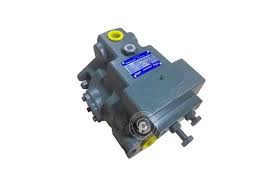Hydraulic pump
Hydraulic pump is a hydraulic component that provides pressurized liquid for hydraulic transmission. The hydraulic pump is the power component of the hydraulic system. It is driven by the engine or motor, and the oil is sucked from the hydraulic oil tank to form the pressure oil discharge and send to the actuator.
Its function is to convert mechanical energy of power machines (such as electric motors and internal combustion engines) into pressure energy of liquid. The output flow that can be adjusted according to the need is called variable pump. The flow that can not be adjusted is called quantitative pump. The commonly used pumps in the hydraulic system are gear pump, blade pump and plunger pump.
Gear pump: smaller size, simpler structure, less requirement on oil cleanliness, lower price. However, the pump shaft is subjected to unbalanced force, serious wear and leakage.
Blade pump: dividing into two acting blade pump and single acting blade pump. This pump has uniform flow rate, smooth operation, low noise, higher working pressure and volumetric efficiency than gear pump, and more complex structure than gear pump.
Plunger pump: high volume efficiency, small leakage. It can work under high pressure, which mostly used in high-power hydraulic system. But the structure is complex. The material and the processing precision request is high. The price is expensive. The oil clean degree request is high. Plunger pump is usually used when gear pump and blade pump cannot meet the requirements.
There are some other forms of hydraulic pumps, such as screw pumps, but the application is not as common as the above three types.



